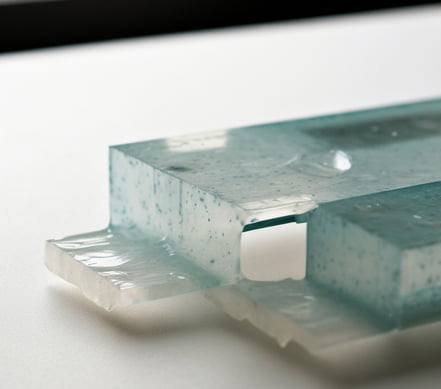


The coefficient of thermal expansion (CTE) is a key consideration when selecting a structural adhesive. Different types of structural adhesives have different CTE ranges, which have a direct impact on their bonding effectiveness.CTE determines how much a material expands or contracts in response to temperature changes, which are critical to the stability and durability of the bonded interface. In this article, we will discuss the CTE ranges of different structural adhesives and their impact on bonding effectiveness to help industry professionals make more informed choices.

1. What is coefficient of thermal expansion (CTE)?
The Coefficient of Thermal Expansion (CTE) is the amount of change per unit length of a material per degree Celsius of temperature change. It is important to understand the CTE range for any adhesive as the CTE value directly affects the suitability of the adhesive. the higher the CTE value, the more sensitive the material is to temperature changes, which means that fluctuations in temperature can lead to significant changes in the dimensions of the material.
2. CTE range of different structural adhesives
The CTE range of different structural adhesives varies widely and usually depends on the chemical composition and physical properties of the adhesive. A few common types of structural adhesives include:
Epoxy Adhesives: Epoxy adhesives have a low CTE, usually between 10 and 30 × 10-⁶/°C. It is suitable for use in environments with low temperature variations and can provide strong bond strength.
Polyurethane Adhesives: Polyurethane adhesives have a higher CTE, typically between 50 and 80 × 10-⁶/°C. Due to their high CTE, polyurethane adhesives have better flexibility and are suitable for applications subject to large temperature variations.
Silicone: Silicone has a wider CTE range, usually between 20 and 100 × 10-⁶/°C. It has strong high temperature resistance and is widely used in electronic equipment and the automotive industry.
3. The influence of CTE on bonding effect
The influence of CTE on bonding effect is mainly reflected in the following aspects:
3.1 Temperature-induced stress changes
When there is a large difference in CTE between different materials, the temperature change will cause different changes in the size of the material, which in turn generates internal stress. If the difference between the CTE of the structural adhesive and the CTE of the base material is too large, this stress may lead to the failure of the bonding interface. In order to avoid this problem, it is crucial to select adhesives and substrates with close CTE values.
3.2 Influence of temperature change on bonding performance
Adhesives with different CTE values have different adaptability to temperature changes. Epoxy adhesives are suitable for use in environments with small temperature changes, while polyurethane adhesives are more suitable for environments with large temperature fluctuations due to their higher CTE values. The flexibility of polyurethane adhesive enables it to withstand greater expansion and contraction during temperature changes, thus maintaining a better bonding effect.
3.3 Long-term durability
CTE differences also affect the long-term durability of the bond. Especially under extreme temperature conditions, materials with large CTE differences may lead to gradual failure of the bonding interface between the adhesive and the substrate. Selecting an adhesive that is suitable for ambient temperature variations is the key to ensuring long-lasting and stable bonding performance.
4. How to choose a suitable structural adhesive?
When selecting a structural adhesive, it is crucial to consider its CTE range and bonding effect. The following are a few factors to consider when selecting a structural adhesive:
4.1 Matching the CTE of the material
When selecting an adhesive, it is best to choose a material with a close CTE range. This will reduce the stress caused by temperature changes and enhance the bonding effect. For example, there is a large difference in CTE between metal and glass, and it may be a better choice to select an epoxy adhesive with a low CTE value.
4.2 Consider the magnitude of temperature change
For applications that need to withstand large temperature changes, select an adhesive with a high CTE, such as polyurethane adhesive or silicone, which can better adapt to environmental changes and maintain long-lasting bonding performance.
4.3 Ensure mechanical properties
In addition to CTE, the mechanical properties of structural adhesives are also critical. For example, epoxy adhesive has high strength, but it may have brittle fracture under the environment of large temperature fluctuation. Therefore, temperature variations, mechanical properties, and environmental requirements need to be considered to select the right adhesive.
Understanding the CTE ranges of different structural adhesives and the impact of these CTE values on bonding effectiveness is the key to selecting the right adhesive. By matching the CTE value of the adhesive with the CTE of the substrate, the stress caused by temperature changes can be effectively reduced and the durability of the bonding effect can be enhanced. Choosing the right structural adhesive not only ensures the stability of the bonding effect, but also extends the service life of the bonded parts. For each specific application, engineers should select the most suitable structural adhesive according to the environmental conditions, temperature variation range and mechanical property requirements to achieve the best bonding effect.
Email to this supplier
2025-01-06
2025-01-09